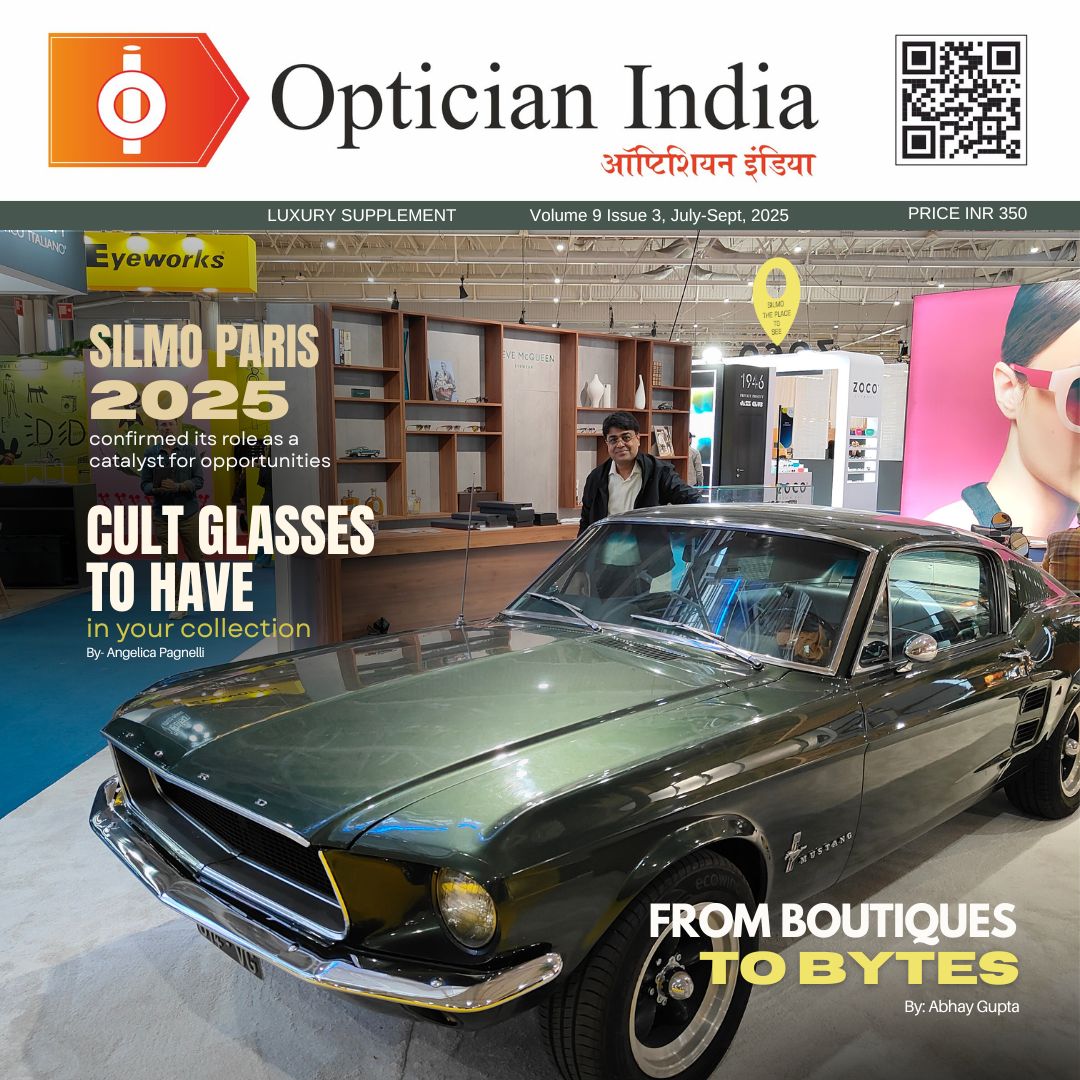Eyeing the Digital Wave: How Optical Retailers Can Thrive in the Age of E-Commerce
1.jpg)
Authorised by: Sanjay K Mishra, Scientist, Dr. R. P. Centre, AIIMS, New Delhi; Naresh Ahuja, Consultant, Ahuja Eye Care, Moti Bag, New Delhi; Sanjay Arora, LVA Consultant, Shroff Eye Centre, New Delhi; Surbhi Arora, Director, Peek a Look Opticals, Madhu Vihar, Delhi
The optical retail industry in India has witnessed a paradigm shift with the rise of e-commerce. As online platforms grow, traditional brick-and-mortar optical stores face significant challenges but also new opportunities. This article analyzes how optical retailers can adapt, thrive, and remain competitive in a digitally driven market.
 |
CHALLENGES FOR OPTICAL STORES
1. Price Wars and Discounts
Online platforms often offer significant discounts due to lower overhead costs, making it challenging for physical stores to match prices. Consumers are increasingly price-sensitive, comparing products online before purchasing.
 |
2. Changing Consumer Behavior
Consumers now expect a seamless shopping experience, with many opting for the convenience of home delivery and virtual try-ons. Traditional retailers may struggle to match the ease and speed of online shopping.
 |
3. Limited Digital Presence
Many local optical retailers lack an online presence, leaving them invisible to tech-savvy consumers. Those without an integrated online strategy miss out on potential sales.
 |
4. Operational Costs
High rental, inventory, and staffing costs make it difficult for physical stores to reduce prices. Meanwhile, e-commerce companies operate centralized warehouses, reducing expenses
 |
OPPORTUNITIES FOR STORES
1. Omnichannel Experience
Combining online and offline services can be a game changer. Retailers can offer features like online appointments, virtual try-ons, and in-store pickup to provide a unified shopping experience.
 |
2. Personalized Customer Service
The in-store experience remains unparalleled for personalized fittings, adjustments, and after-sales services like repairs and lens replacements. Retailers can leverage this strength.
 |
3. Brand Trust and Loyalty
Local stores can build trust through face-to-face consultations, loyalty programs, and community events, creating lasting customer relationships that online platforms struggle to replicate.
 |
4. Expanding Product Portfolio
Physical stores can diversify their offerings with niche products such as premium eyewear, specialty lenses, and personalized eye care solutions that may not be easily available online.
 |
5. Leveraging Technology
Retailers can invest in in-store technologies like smart mirrors for virtual try-ons and digital eye- testing equipment, blending traditional service with tech-enabled convenience.
.jpeg) |
THE WAY FORWARD: STRATEGIES FOR SUCCESS
1. Establish an Online Presence: Create an easy-to-navigate website, and list products on popular online marketplaces.
2. Social Media Engagement: Regular updates, promotions, and customer engagement on social platforms can enhance brand visibility.
3. Collaborate with E-commerce Platforms: Partnering with online stores for sales and marketing can be mutually beneficial.
4. Offer Exclusive In-Store Benefits: Provide in-store-only offers such as free consultations and personalized fittings.
5. Invest in Staff Training: Well-trained staff can offer expert advice, creating a superior customer experience.
Conclusion
While the e-commerce boom has reshaped the optical retail industry in India, it is not the end of the road for brick-and-mortar stores. By embracing technology, enhancing customer service, and creating a hybrid business model, traditional optical retailers can secure a thriving future in this rapidly evolving digital age.

.jpg)

.jpg)
.jpg)
.jpg)


1.jpg)



.jpg)
.jpg)



_(Instagram_Post).jpg)
.jpg)
_(1080_x_1080_px).jpg)


with_UP_Cabinet_Minister_Sh_Nand_Gopal_Gupta_at_OpticsFair_demonstrating_Refraction.jpg)
with_UP_Cabinet_Minister_Sh_Nand_Gopal_Gupta_at_OpticsFair_demonstrating_Refraction_(1).jpg)

.jpg)








.jpg)



.png)




